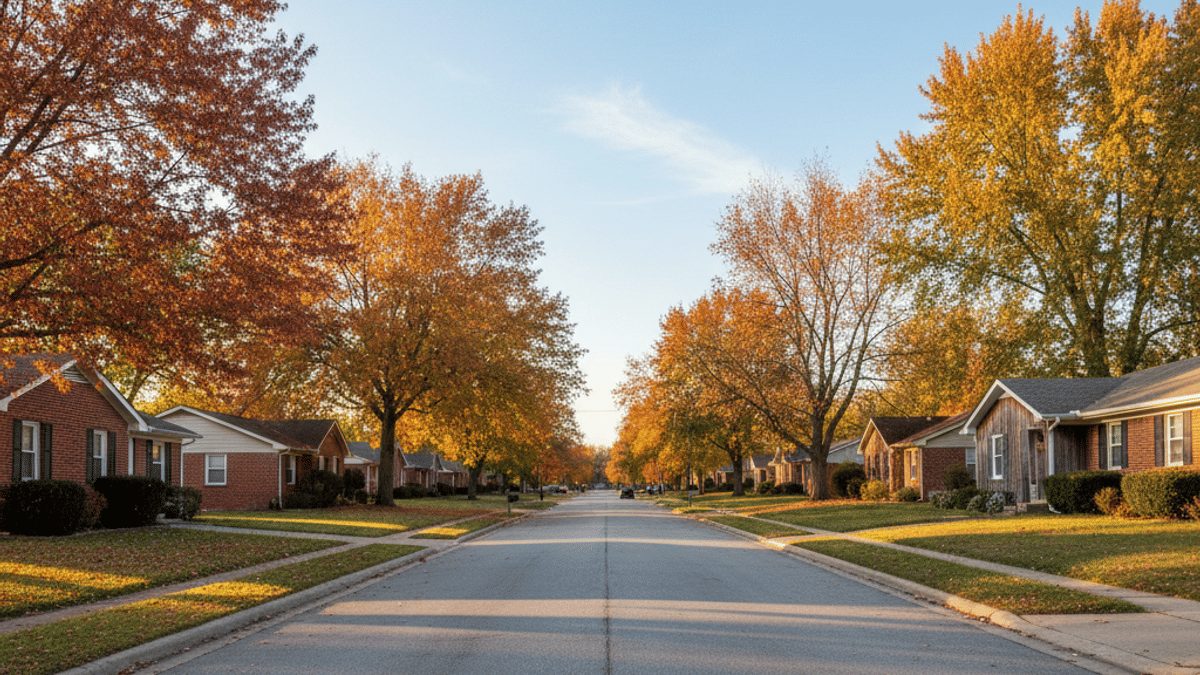Why Timing Even Matters in a Mid-Missouri Town
Fulton isn’t a mega-metro with hundreds of new listings a day. Inventory moves in pulses. One week the feed looks like a ghost town, the next week three solid options pop up in the same subdivision. Couple that with a median listing price that hovers around the mid-200s and you have a market where a five-percent swing in price feels big. Your calendar choice therefore matters. A lot.
The three levers that shift prices here:
- Listing volume driven by school calendars.
- Mortgage-rate spikes that hit smaller towns first.
- Local employers like the Fulton Medical Center that shuffle staff seasonally.
Pay attention to those levers and you will see why certain months keep floating to the surface.
Seizing September
Ask five Fulton agents which month delivers the smoothest purchase and at least three will say September. Two reasons keep coming up.
1. Listings linger. By early fall, sellers who overshot their spring price goals are tired. Their days-on-market count often ticks past sixty. One Callaway County MLS pull showed the median price drop from June to September averaging 3.4 percent over the past four years. That may not sound huge, but on a 250-thousand-dollar property it equals the cost of a compact sedan.
2. Rate dips play tag. Freddie Mac’s national data puts one-year rate lows in nine of the last twelve years somewhere between late August and mid-October. Fulton lenders track that pattern; they roll out short-lived promos to kick-start fall volume. You might see an eighth of a point shaved off the standard thirty-year. That alone can pull your monthly payment down by forty or fifty bucks.
How to Work the September Window
- Walk the property twice. Once right after Labor Day, again two weeks later. If it is still there, get your agent to sniff for price drop signals.
- Slide in with flexible closing. Sellers often want to wrap by Halloween so they can focus on the holidays. Offer that timeline and you edge ahead of equally priced bids.
- Hold firm on inspection requests. Fatigue makes sellers agreeable to repairs they turned down back in May.
Winter: Bargain Hunting by the Fireplace
Picture a brisk January morning along Court Street. Not many yard signs, fewer buyers, but the ones walking up those icy steps tend to snag serious discounts. Fulton’s closed-sale files tell the story: average sale-to-list ratio in January and February runs roughly 1.8 percentage points better for buyers than the yearly average.
Why Winter Works
Lower foot traffic
Between icy driveways and holiday credit-card bills, most shoppers vanish until March. Less competition means you are less likely to overpay by emotion.
Motivated life events
Divorces, relocations, or estate settlements do not wait for daffodils. Properties tied to urgent life events must sell, snow or shine. They often arrive 10–15 percent under the previous summer’s asking price.
Challenges to Brace For
Thin inventory. You may only see a half-dozen new single-family listings all month. That scarcity can push you into compromise mode. Guard against settling for a layout you hate just to capture the winter discount.
Slower service providers. Appraisers, inspectors, even movers sometimes operate on skeleton crews after New Year’s Day. Build extra buffer days into the contract.
Stories From the Ground
A local buyer, let’s call her R, closed on a brick bungalow last January. The home lingered for 97 days. R offered 14 thousand under list and asked the seller to pay title fees. Accepted without a counter. Try that in April and you are lucky to keep the light fixtures.
Spring Fever: Crowd Energy Meets Crowded Prices
Come March, the entire region wakes up. For-sale signs bloom faster than the dogwoods. Historically, Fulton records nearly thirty-five percent of its annual listings between March and May. Buyers love the selection, yet they pay for that convenience.
The Upside
- Fresh inventory means you can be picky about block, floor plan, and lot size.
- Warm weather reveals roof wear, drainage issues, and patio cracks that snow hid.
- School-year buyers rush to lock a closing by June so movers can unpack before class begins.
The Downside
- Multiple offers on anything turnkey.
- Sellers emboldened by foot traffic rarely entertain price cuts.
- Average sale-to-list ratio in April clocks in at 99 percent. That is full price in plain English.
How to Survive Spring
- Offer non-price perks. Shorter inspection windows and a larger earnest-money deposit calm a seller’s nerves as effectively as an extra thousand or two on the sticker.
- Scout listings that missed the first wave. Homes posted in late February sometimes sit until mid-April. They carry the winter discount but missed the hot-start buzz. Perfect snag target.
Summer: Heat, Holidays, and a Mid-Season Dip
June starts with a bang. By late July a curious quiet falls over the market. Families lock their moves early, college staff exit for vacation, and open-house attendance thins. Locals call it the July Lull.
Pros of a Summer Buy
- Extended daylight. You can view houses after work without racing the sunset. More showings per day equals a quicker search.
- Exterior clarity. Foundation cracks, yard grading, and siding issues stand out in full sun. An inspector once told me he closes more “undiscovered leak” findings in summer than any other season.
Potential Mid-Season Discount
Data from Callaway County closings shows a tiny yet reliable price dip between the second and fourth week of July. Median price drops roughly one point relative to early June. Not earth-shattering, but if you planned to buy in August anyway, lean into those weeks.
Cons to Watch
Sellers who priced high in May and never budged still think their number is gold.
Heat and humidity during inspections can overinflate minor issues. Gauge an inspector’s notes carefully before demanding a price chop.
Calendar of Market Pulses
- Early February: Tax refund chatter begins. A few early listings appear as folks anticipate down-payment cash.
- Late March: Inventory surge. Expect competing offers on renovated properties within forty-eight hours.
- Third week of July: The dip. Many buyers travel or focus on back-to-school spending. Fewer multiple-offer scenarios.
- Early September: Sweet spot. Inventory still decent, seller fatigue rising.
- Thanksgiving week: Listings cool off sharply, but the rare property that hits the feed often signals urgency. Opportunity for brave souls.
Key Factors Beyond the Calendar
Interest-Rate Swings
One-eighth of a percent on a 275-thousand-dollar loan affects your wallet more than an extra coat of interior paint ever will. Track the ten-year Treasury yield. If it slides fifteen basis points over two weeks, call your lender. A sudden drop can offset a slightly higher sale price.
Local Employer Moves
Fulton relies on education, health care, and light manufacturing. When the glass plant expanded last year, demand spiked for entry-level price points. Agents who caught that news early warned buyers to step fast. Keep an ear on chamber-of-commerce announcements to anticipate mini-booms.
Personal Runway
Make sure your own ducks line up before stalking listings. Rate watchers sometimes miss their window because they are still cleaning up a late credit payment. Pull your report now, tighten loose ends, and secure a pre-approval that lasts sixty or ninety days.
Cash Cushion for Repairs
Older Fulton homes may carry cast-iron sewer lines or original knob-and-tube wiring. Closing during a bargain month only helps if you have the reserves to tackle these fixes. Aim for three percent of purchase price in liquid funds.
Hidden Windows Nobody Talks About
- The Post-Thanksgiving Friday. Most buyers focus on leftovers and online shopping. Search portals, though, still push live inventory. An estate or relocation listing can sneak through at a value price. Sellers hope to lock a contract before end-of-year accounting.
- Early May Rainouts. When repeated weekend storms hit, open houses flop. A property can linger long enough to drop below algorithms’ “hot listing” highlights. Watch the weather forecast and pounce.
- Late-Night Price Drops. Some brokers reduce prices after hours to restart the “days on platform” counter at dawn. Set alerts for 11 p.m. to 1 a.m. CST and you might see reductions the casual shopper misses.
Your Quick Cheat Sheet
- Best overall month: September
- Biggest buyer discount: January, February
- Widest selection: March through May
- Sneaky deal pocket: Third week of July
- Late-year wildcard: Black Friday week
Ready to Scout Fulton Listings?
Sharpen your goals first. Understand whether you crave the rock-bottom price or the perfect front-porch view of downtown festivals. Then set alerts keyed to the windows above, line up financing, and keep your schedule flexible enough for a same-day tour. Fulton may be small, but when the right home appears you still have to sprint.
That’s it. Calendar decoded, local quirks revealed, excuses erased. Next step belongs to you.







